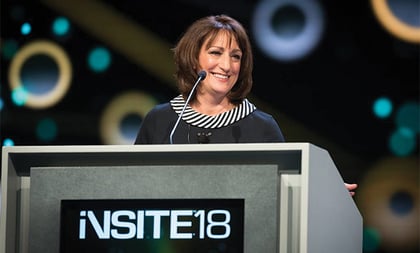The financial advisory industry is in the midst of a transformation due to challenges from increasing consolidation, changing client needs, new technologies and a growing shortage of talent, according to the Pershing CEO Lisa Dolly.
Dolly highlighted these four trends as one of several keynote speakers at the June 6-8 Pershing Insite conference in Orlando, Florida, which attracted over 2,000 registered investment advisor and other attendees. BNY Mellon-owned Pershing, she and other executives pointed out at the event, now has some $615 billion of RIA assets on its platform.
Bigger is better. “We should expect there will be much greater concentration of assets in fewer broker/dealers and RIAs,” said Dolly.
Consolidation in the industry will continue as firms look to add efficiencies and private equity firms continue to finance acquisitions, especially of RIAs with $1 billion or more in assets under management. They certainly have the money for it — $1.7 trillion in assets that are uninvested, according to Dolly.
Life management trumps investment management. Clients want their financial advisors to provide more than asset management.
They want help with their earnings — careers — and spending — “holistic planning,” the CEO explained. They essentially want advisors who can successfully address the anxiety they experience over multiple money matters.
Technology has yet to be exploited. “Our industry is lagging way behind” in the use of automation, robotics, self-service, artificial intelligence and biometrics, said Dolly, noting the benefits of each.
AI, for example, can help predict client behavior, and biometrics, by improving personal recognition capabilities of software, can provide more cybersecurity. “Technological advances will happen … disrupting and improving the industry,” she explained.
The talent shortage will become much more severe. “We have an aging workforce and firms are struggling to attract talent,” Dolly said.
“We should expect labor costs to increase and a significant need for technology to solve that problem,” which also will cost firms, she added. On the labor front, the executive anticipates stronger demand not only for advisors but also for data engineers, regulatory experts and financial analysts.
Beyond these growing trends, the industry is at root about the people it serves, according to Dolly. “They will forget what you said, forget what you did but never forget how you made them feel.”
As financial advisory firms embrace technology to stay competitive and enhance in-house operations and relationships with clients, they should consider this: “Technology is the great equalizer among firms big and small,” according to Evan LaHuta, head of client experience at BNY Mellon. “Everyone starts to look the same, so how do you add value?”
Tech Tips Another Pershing speaker — Bill Winterberg, founder of FPPad.com, a consulting firm that helps advisors adopt technology in their practices — suggested that advisory practices embrace easy-to-use technologies to stay in touch with clients, including:
• Flash briefings, audio content that plays on smart speakers like Alexa. Advisors can discuss the local real estate market or other topics and “become part of a client’s everyday routine.” All it takes, said Winterberg, is a telephone microphone and using services like storyline.com, which publishes flash briefings for free. “It’s a new way to meet client expectations.”
• Video content on YouTube to communicate with clients and others and publicize your views. Typical YouTube content consists of speeches and other presentations, many with visual aids like charts and graphs.









 June 27, 2018 at 01:00 PM
June 27, 2018 at 01:00 PM











